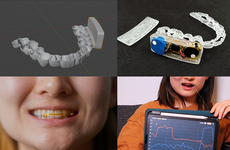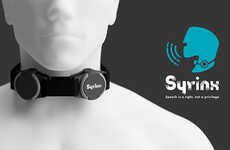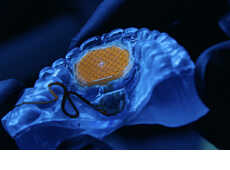
Robotic Mechanical Mouth Helps Hearing-Impaired Improve Articulation
Katie Cordrey — April 24, 2010 — Tech
References: geekologie & popsci
Researchers at the Kagawa University in Japan have created a robotic mechanical mouth that uses a learning algorithm to mimic the sounds of human speech. Early prototypes did not have a nose or lips, but recent models are more complete.
Engineers Hideyuki Sawada, Mitsuki Kitani, and Yasumori Hayashi used artificial vocal cords in combination with other artificial voice-making parts to create the robotic mouth that is able to recreate and analyze human sounds and provide input that the hearing-impaired can use to improve their pronunciation and speech.
Engineers Hideyuki Sawada, Mitsuki Kitani, and Yasumori Hayashi used artificial vocal cords in combination with other artificial voice-making parts to create the robotic mouth that is able to recreate and analyze human sounds and provide input that the hearing-impaired can use to improve their pronunciation and speech.
Trend Themes
1. Robotic-vocal-learning - The trend is towards robotic mechanisms that use learning algorithms to recreate human speech.
2. Assistive-speech-technology - There is a growing trend for assistive technology technologies to help the hearing impaired improve their articulation.
3. Artificial-vocal-cords - The development of artificial vocal cords and other artificial voice-making parts is a growing trend in speech technology.
Industry Implications
1. Healthcare - This innovation creates opportunities for healthcare industries to provide technological solutions for those with speech impairments.
2. Education - Education industries can use this technology to help students with speech impairments learn and improve their pronunciation.
3. Robotics - Robotics industries can develop similar speech technology to help us better interact with our robotic counterparts.
5.4
Score
Popularity
Activity
Freshness























